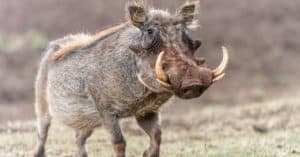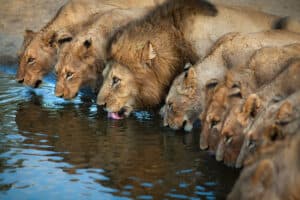The nomenclature surrounding bovines can be quite difficult to understand. The words steer, cow, ox, and bull can all refer to members of the Bos genus of animals that are all basically the same creature. So, what are the differences between, say, a steer vs cow? We will perform a deep dive on these mammals and differentiate them for you in several ways. By the time we’re done, you’ll know a steer from a cow along with how they’re related to bulls, heifers, and oxen!
Comparing a Steer vs Cow
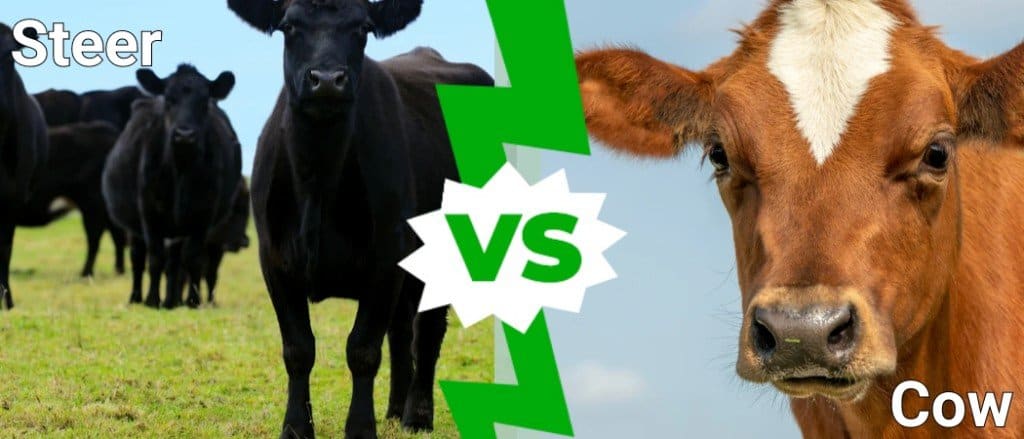
The 5 Key Differences Between a Steer vs Cow
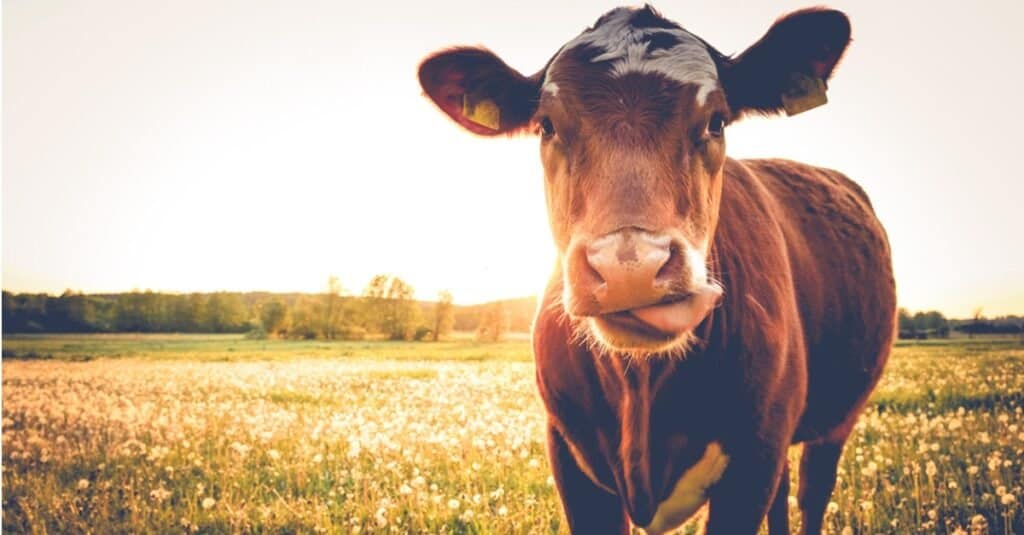
Steers and cows differ in their size, sex, and morphology.
©SehrguteFotos/Shutterstock.com
The greatest differences between a steer and a cow are their sex, purpose, and morphology. Steers are male bovines that have reached maturity after they have been castrated, and cows are mature female bovines.
Besides, steers are raised to be slaughtered for meat, and cows are also raised for slaughter, to produce more calves, and produce milk.
Thus, steers are larger and heavier than cows, and they have more muscular shoulders and may have horns depending on the species. Cows have udders, a wider midsection, angular shoulders rather than rounded ones, and may have horns.
These are the main differences between a steer and cow, but we’re going to plumb the depths of these differences and show you what sets these animals apart.
Steer vs Cow: Sex
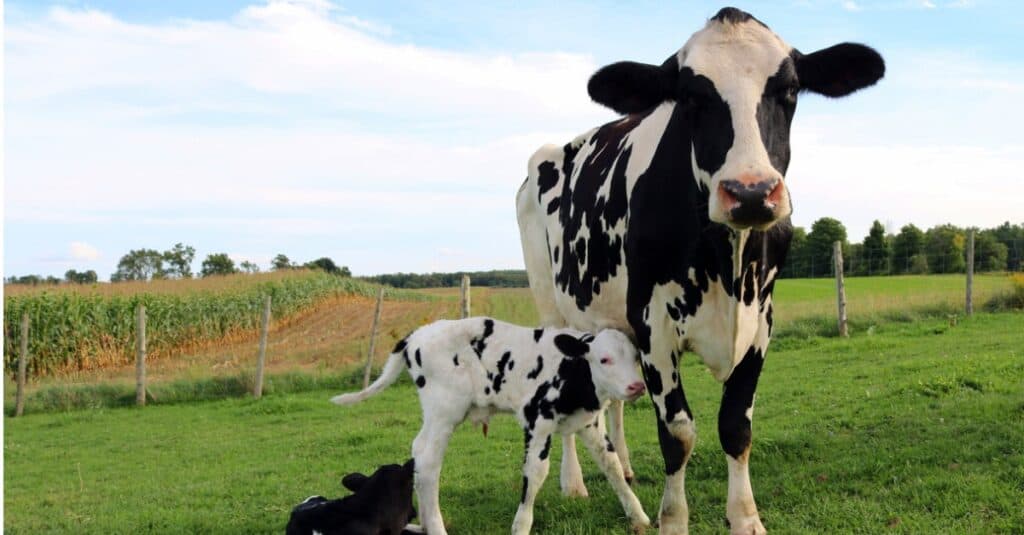
Cows are female bovines that have had calves.
©iStock.com/Diane Kuhl
Steers are male and cows are female. Unlike oxen, we cannot separate sex from the creature. Specifically, steers are castrated males that have come into maturity after they have been neutered.
Cows are mature female bovines that have already had at least one calf. The sex of these animals is their most apparent difference, and it can help you tell them apart.
Steer vs Cow: Size
Steers are larger than cows in almost every case. However, it’s important to remember that steers are castrated males that did not have the chance to mature before they lost the ability to produce large amounts of certain hormones.
As a result, steers will have a larger frame than the average cow, but they will also be smaller than oxen and most bulls. Cows are smaller than a steer and still less muscular. Yet, they are larger than a heifer, a young female cow.
On average, cows will grow between 800lbs and 1,700lbs, stand about 4.5ft-5.5ft at the shoulder, and measure 5ft-6ft long. Steers will grow between 1,500lbs and 2,000lbs, stand 5ft-5.5ft at the shoulder, and can measure between 7ft-9ft long. Steers are large, but not as big as their species can get.
Steer vs Cow: Purpose
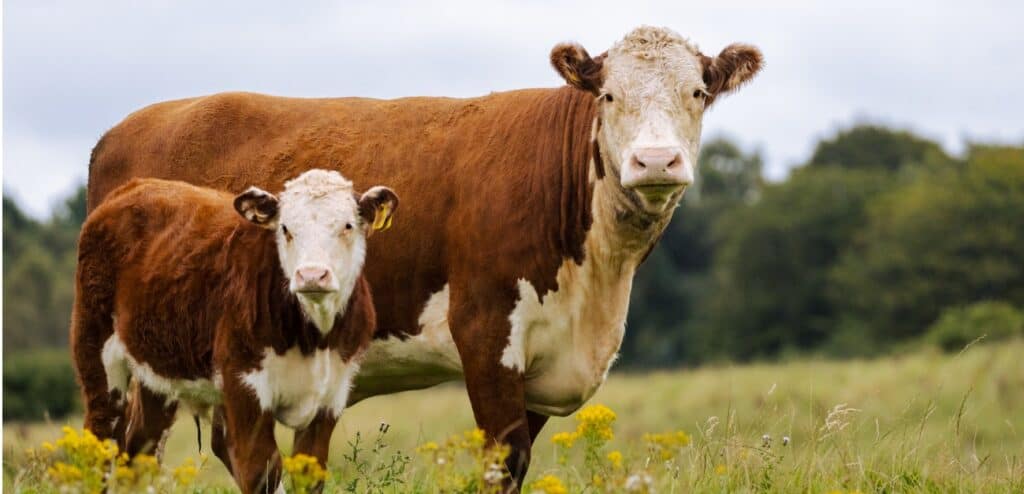
Cows are used to breed calves and produce milk.
©iStock.com/Scott Allan
Steers are bred to be slaughtered for food, often at a young age. Cows are bred so they can give birth to more calves, provide milk that will be sold, and be slaughtered for meat.
Unlike oxen or bulls, steers have a rather macabre purpose when one considers that they are usually less than two years old when they are killed. Bulls breed for some of their lives. They may or may not be slaughtered. Oxen are working animals like horses, and they are certainly not used for their meat unless the situation is desperate.
Steer vs Cow: Morphology
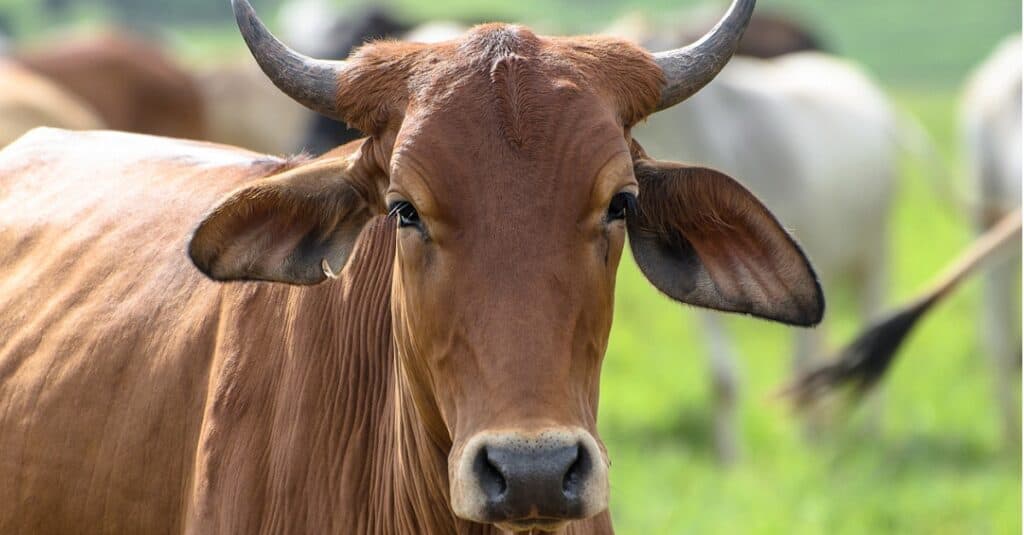
Cows have more prominent udders than steers.
©iStock.com/vbacarin
Although steers are castrated at a young age, their bodies are notably different than cows. Steers will have horns if the species grows them. They will also possess muscular shoulders, thick necks, and large heads. Steers will maintain the tuft of hair in the middle of their body that hides their penile sheath, but they will not have the scrotum seen in bulls.
Cows have a wider midsection from calving, and their shoulders are not rounded. Instead, their shoulders are more angular. Lastly, they will have udders and prominent teats that are not seen on steers. Thus, telling these two animals apart is simple.
Steer vs Cow: Age
By definition, steers are mature males that have been castrated before they reached the age of maturity. Thus, a steer is between 12-15 months of age or older since that is the time in which they mature. Cows are usually about two years old or older.
A cow is a mature female bovine that has given birth to at least one calf. In this case, a female bovine comes to maturity at 12-15 months. Combined with the gestation period, a cow is usually defined at a later age than a steer.
FAQs (Frequently Asked Questions)
How Are Steers Different from Bulls and Oxen?
Steers are mature castrated male bovines. Bulls are intact male bovines that are used to breed. Oxen are usually castrated male bovines that have been raised to work on farms or in other industries.
What Are Heifers Compared to a Cow?
Heifers are mature female bovines that have not yet had a calf, but cows are mature female bovine with a calf. Heifers are usually younger than cows since they technically become heiferettes if they reach two years of age without a calf.
What Do Steers Eat?
Steers, like other ruminants, primarily feed on grass and other plants. Using their incisors, they will pick up choice bits of plants before moving the food to their jaws where they can chew the food into a bolus. They will then swallow and regurgitate the food, forming a cud. Steers will chew their cud until it is finally ready to be digested by their multi-chambered digestive system.
The photo featured at the top of this post is © Laura Hedien/Shutterstock.com
Thank you for reading! Have some feedback for us? Contact the AZ Animals editorial team.




